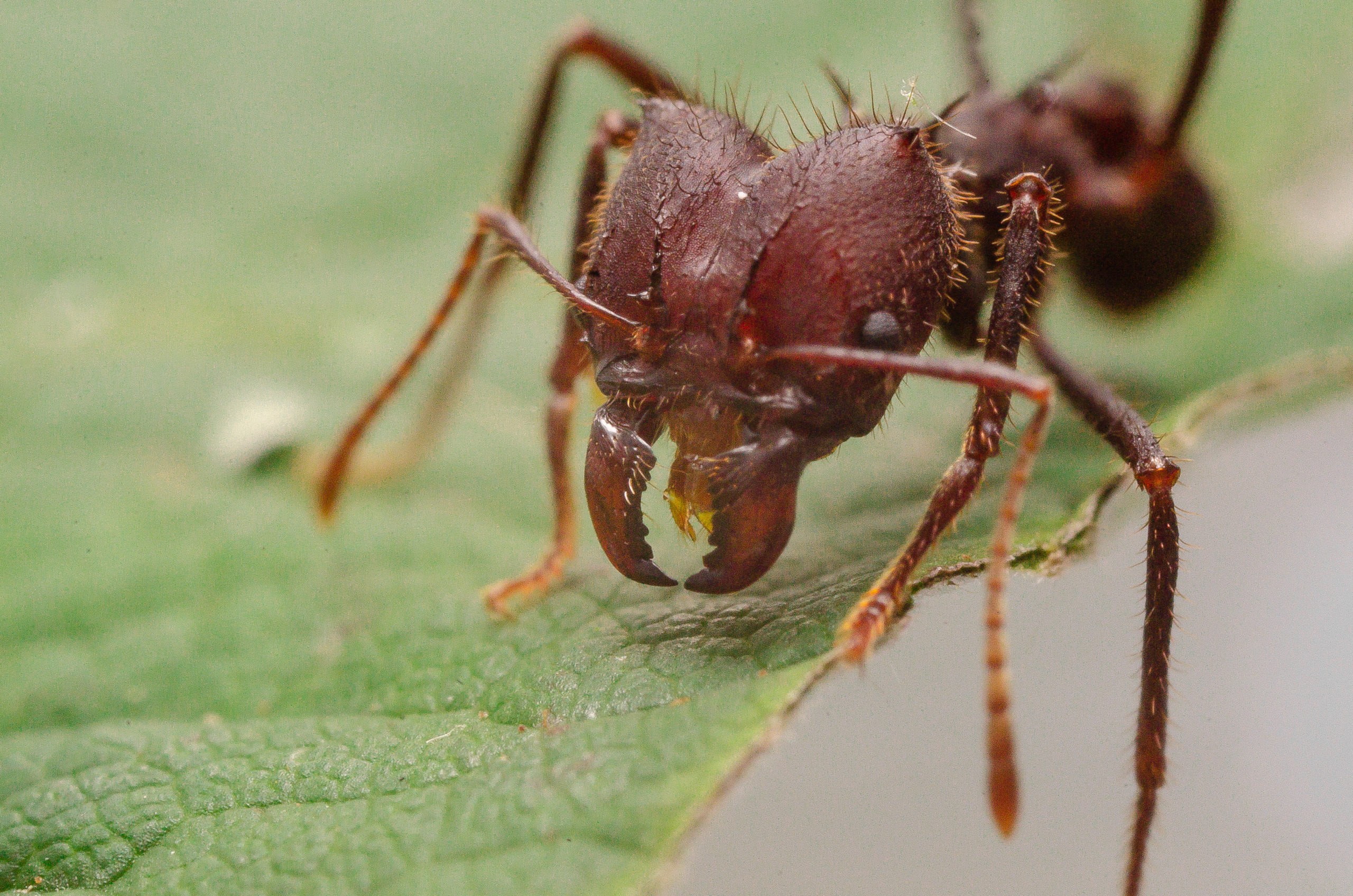Insect Herbivory
Insect-plant interactions are key for the biodiversity of our planet. One of the most important of these interactions is that many insects feed on plants. These plant feeders change our environment with the burrows, dens and trails that they build, they alter local nutrient availability by converting plant tissue into faeces and dung, and – last but not least – they can be significant pest species that cause enormous damage and wreak havoc year after year. As different as they may be, all insect herbivores have in common that plant feeding must involve a mechanical interaction between mouthpart and plant tissue; if the insect cannot drill, pierce, cut or grind the plant tissue, it cannot feed on it. We study these biomechanical interactions, because they are a key ingredient of the overall performance of the individual herbivores, and hence integral to their success. Currently, our main focus lies on the ants from the genus Atta, commonly – and for good reason – called the Leaf-Cutter Ants.

LEAF-CUTTER ANTS . . .
- . . . ARE THE WORLD’S FIRST AGRICULTURALISTS
Leaf-cutter ants harvest fresh plant material which they use to grow a fungus as crop.
- . . . CUT A LOT OF LEAVES
If you were to straighten up all cuts made by a single mature colony over duration of a year, the line would have a length equivalent to about a third of the earth’s circumference!
- . . . ARE THE PRIME CONSUMER OF PLANT-MATERIAL IN THE NEOTROPICS
If you are unfortunate enough to be a plant in the vicinity of a mature leaf-cutter ant colony, you might lose up to every fourth leaf to these insatiable foragers.
Clearly, leaf-harvesting is central to the behaviour of the Attas, and happens on an almost industrial scale. The need to keep this undertaking feasible has given rise to a number of extraordinary adaptations and innovations, among which is a polymorphism – that is workers have very different sizes – second to no other social insect. We currently explore the complex interaction between body size and harvesting performance, aiming to understand how far leaf-harvesting in these animals is organised along ergonomic lines.
automated tracking

size estimation

3D morphology

mandible joint kinematics

mandibular cutting forces











